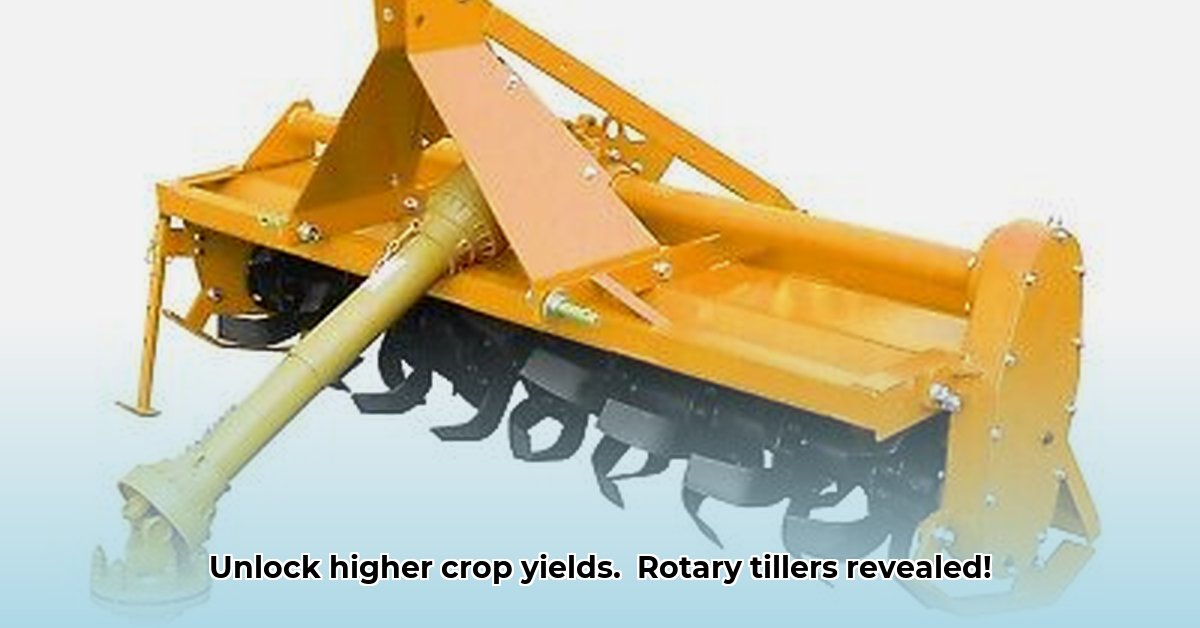
Rotary Tillers at Tractor Supply: Your Guide to Sustainable Soil Preparation
Sustainable agriculture is gaining momentum, and choosing the right tools is crucial. Rotary tillers, readily available at Tractor Supply, offer a practical approach to soil preparation, but understanding their role within a broader sustainable farming strategy is key. This guide provides actionable insights for choosing, using, and maintaining these tools while minimizing their environmental impact. For more on sustainable farming tools, check out this helpful resource.
Tilling vs. No-Till: A Sustainable Farming Comparison
Traditional rotary tilling aggressively mixes the soil, creating a fine seedbed. While this might seem ideal, it disrupts soil structure, potentially leading to increased erosion and reduced water retention. "Aggressive tilling can significantly decrease soil organic matter," explains Dr. Emily Carter, Soil Scientist at the University of California, Davis. Conversely, no-till farming leaves the soil undisturbed, preserving its structure and promoting beneficial soil organisms. This method often results in healthier, more resilient soil–but may require adjustment to your weed management strategy. Which method is right for you depends heavily on your specific circumstances.
Choosing Your Tractor Supply Rotary Tiller: A Step-by-Step Guide
Selecting the right rotary tiller from Tractor Supply requires careful consideration of your needs. Don't simply grab the first tiller you see!
Assess Your Land: Start by determining the size of your land. A small backyard garden requires a compact tiller; larger fields demand a more powerful model. Consider how much of your land you till regularly to determine appropriate tiller size.
Analyze Your Soil: Different soils need different tillers. Heavy clay soil will require a more powerful engine than sandy loam. A powerful engine is a worthy investment for tough conditions. What factors are most important to you: ease of use, longevity, or budget-friendliness?
Engine Power: Horsepower directly impacts tilling performance, especially in compacted soils. More horsepower equals more raw power under difficult conditions. But, a higher horsepower engine may not be necessary for your needs. Prioritize appropriately!
Tiller Width: Wider tillers cover more ground quicker, but may be less maneuverable in tight spaces. Consider the size of your plots, including the amount of space you will need to turn the tiller.
Additional Features: Look for adjustable tilling depth settings and reverse functionality for better control and ease of use. These seemingly small features can massively impact your experience. It’s also wise to check the warranty before purchasing.
Mastering Rotary Tilling: A Practical Guide to Usage and Maintenance
Once you've chosen your tiller, it's time to put it to work. Proper usage and regular maintenance are critical to extend the longevity and efficiency of your equipment.
Prep Your Area: Remove all large debris like rocks, sticks, and leftover crops. Rocks can damage the tiller's tines, so a thorough cleaning is crucial. This step will prove to be worthwhile!
Assemble the Tiller: Refer to the owner's manual for specific instructions. Each model is unique, and proper assembly ensures smooth operation. Consult Tractor Supply staff for assistance if needed. Don't be afraid to ask for help!
Start Tilling: Begin at one edge of the area and overlap each pass slightly for even tilling. Start at a slow speed to get a feel for the tiller and how it interacts with the soil. Gradually increase speed as you feel comfortable.
Adjust Depth: Many tillers allow adjustment of tilling depth. Start shallow and gradually increase as needed, avoiding over-tilling. Over-tilling can actually be detrimental to soil health.
Maintenance is Key: Clean mud and debris after each use, lubricate moving parts, and sharpen or replace dull tines regularly. This is vital for the machine's longevity. A well-maintained tiller will have a much longer life.
Rotary Tillers and Sustainability: Weighing the Pros and Cons
While rotary tillers offer benefits, acknowledging their limitations is crucial for sustainable farming.
| Pros | Cons |
|---|---|
| Efficient soil preparation | Potential soil structure damage |
| Relatively affordable and readily available | Increased risk of erosion |
| Easy to use, even for beginners | Can disrupt beneficial soil microorganisms |
| Wide selection at Tractor Supply | Higher energy consumption compared to no-till methods |
Beyond the Tiller: Integrating Sustainable Practices
Rotary tilling is just one aspect of sustainable agriculture. Consider these additional practices for a holistic approach:
- Cover Cropping: Planting cover crops between main crops protects the soil, adds nutrients, and improves soil structure.
- Crop Rotation: Rotating crops helps prevent pest buildup and maintain soil fertility.
- Composting: Adding compost boosts soil health and fertility.
Remember, sustainable farming is a journey, not a destination. Utilizing a rotary tiller from Tractor Supply can be a beneficial tool for many farmers, but it is part of a larger picture. Consider your specific requirements and resources before making decisions on farming methods. Consistent learning and adaptation are essential.